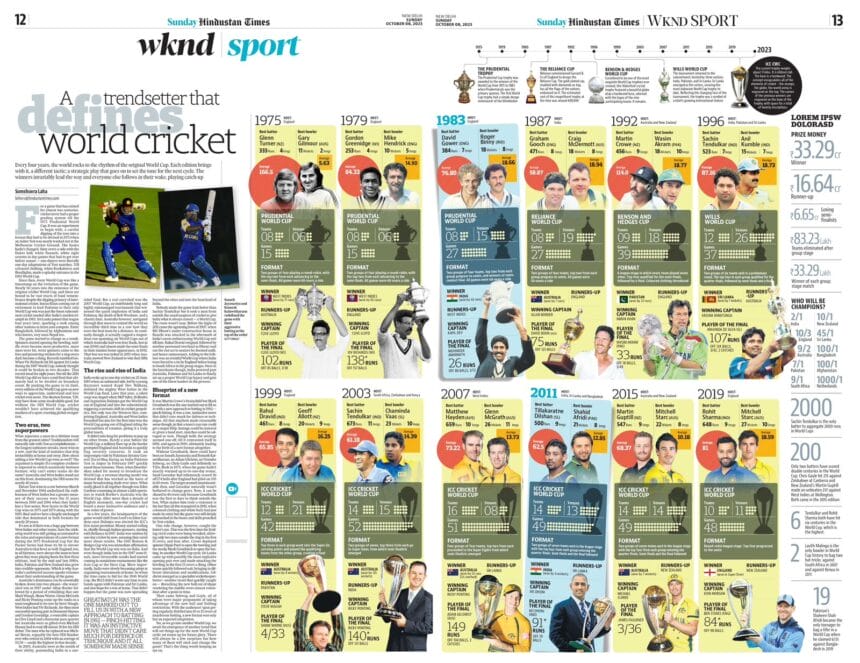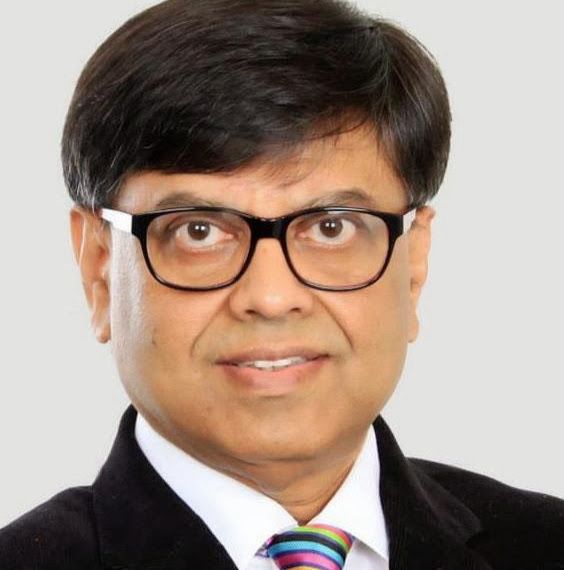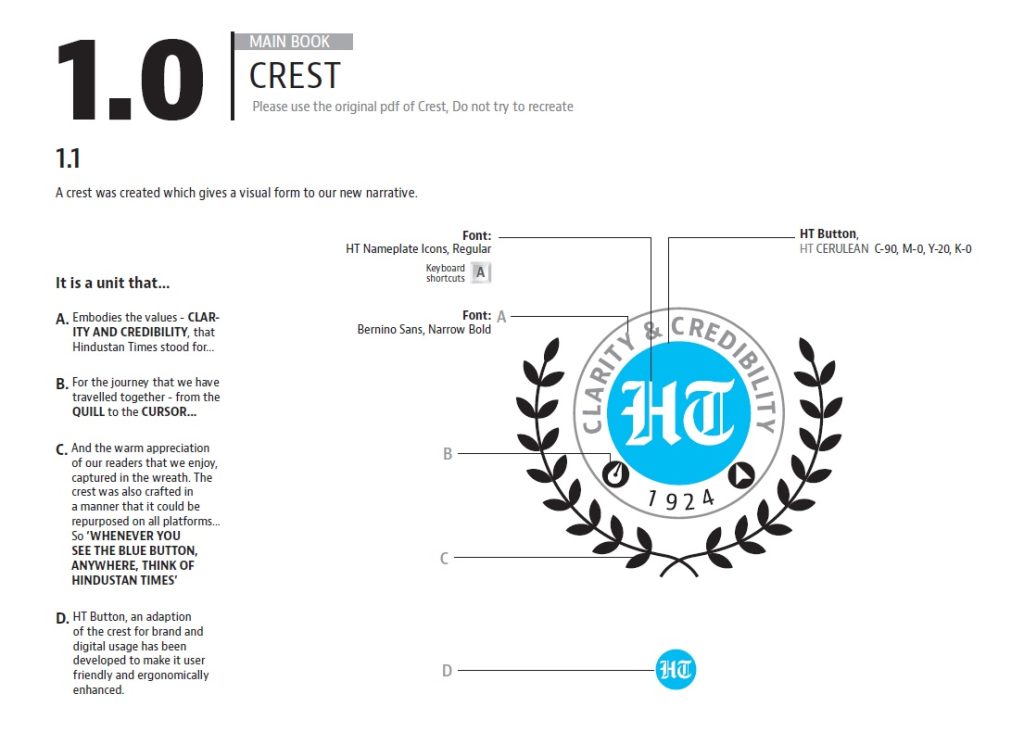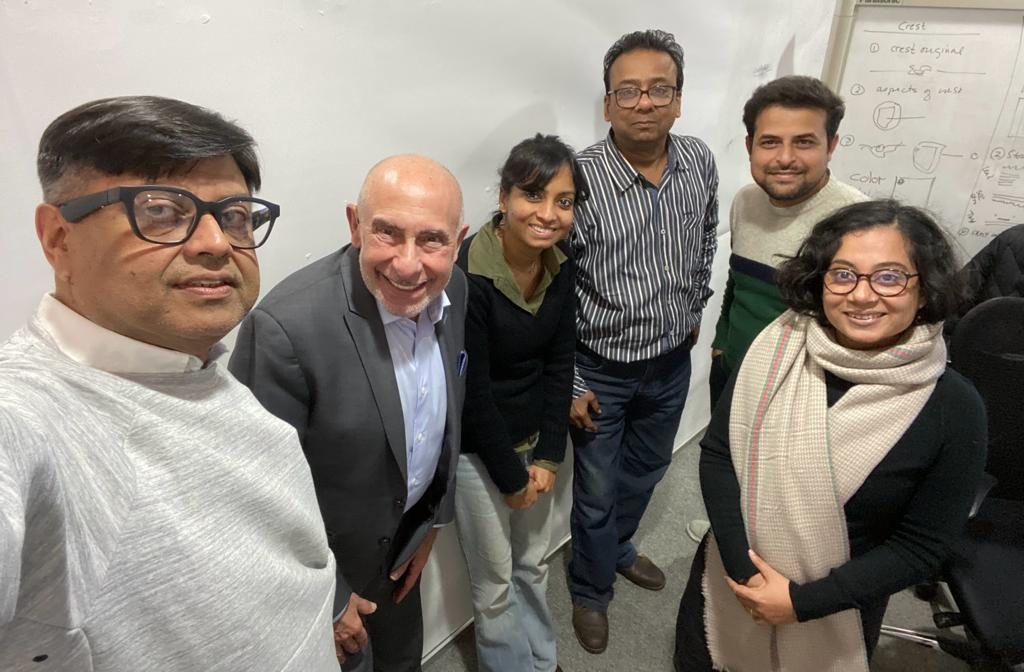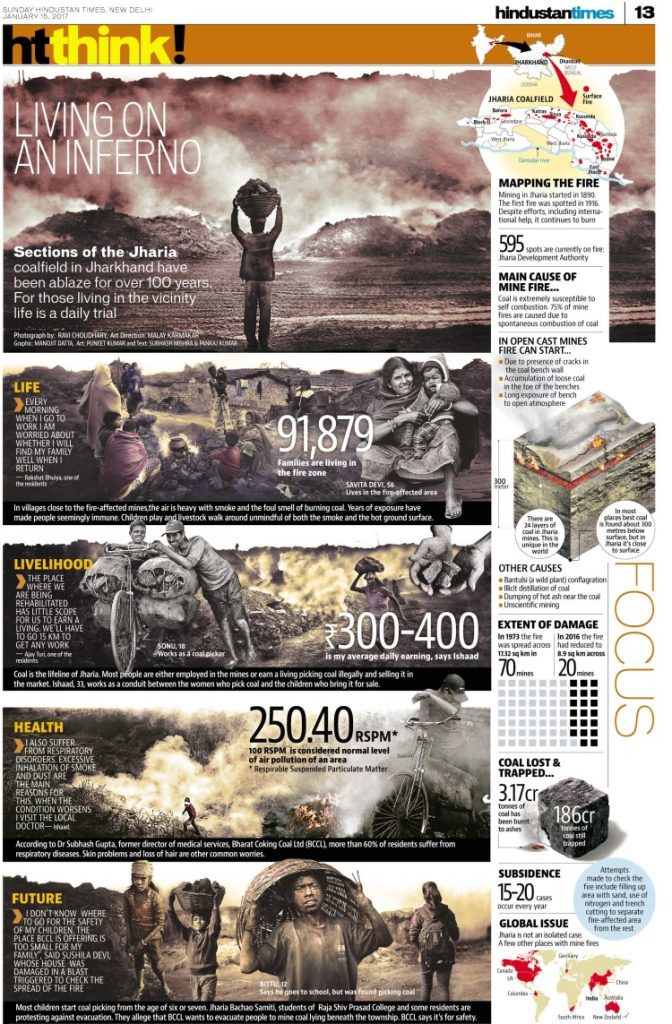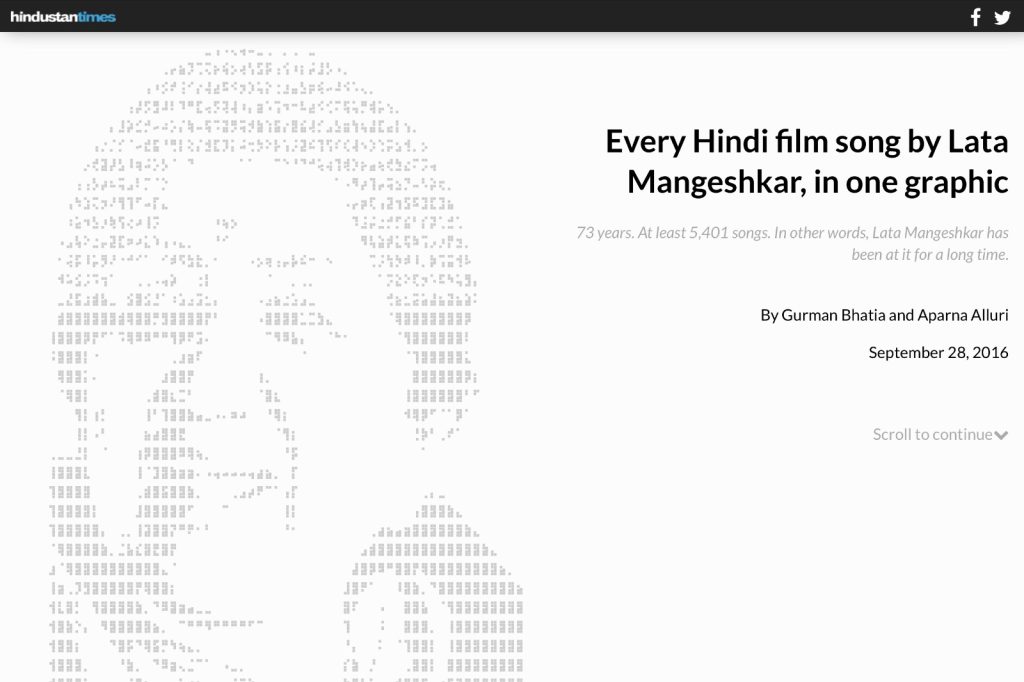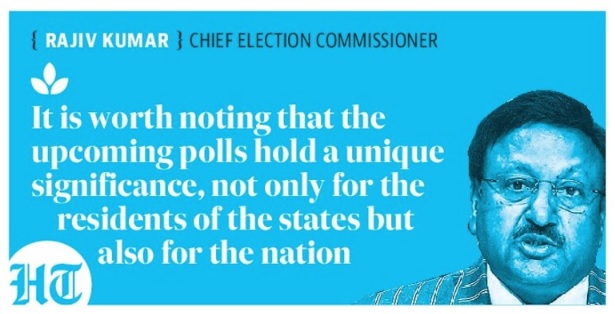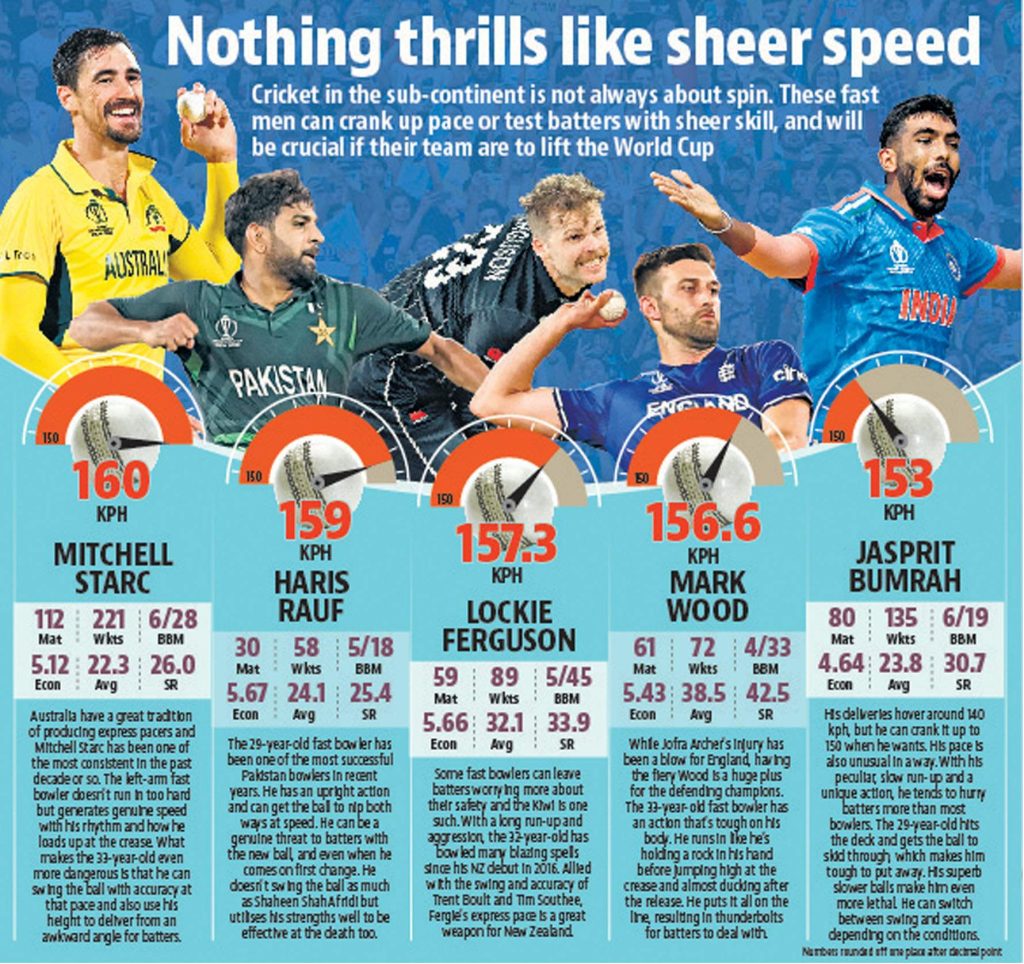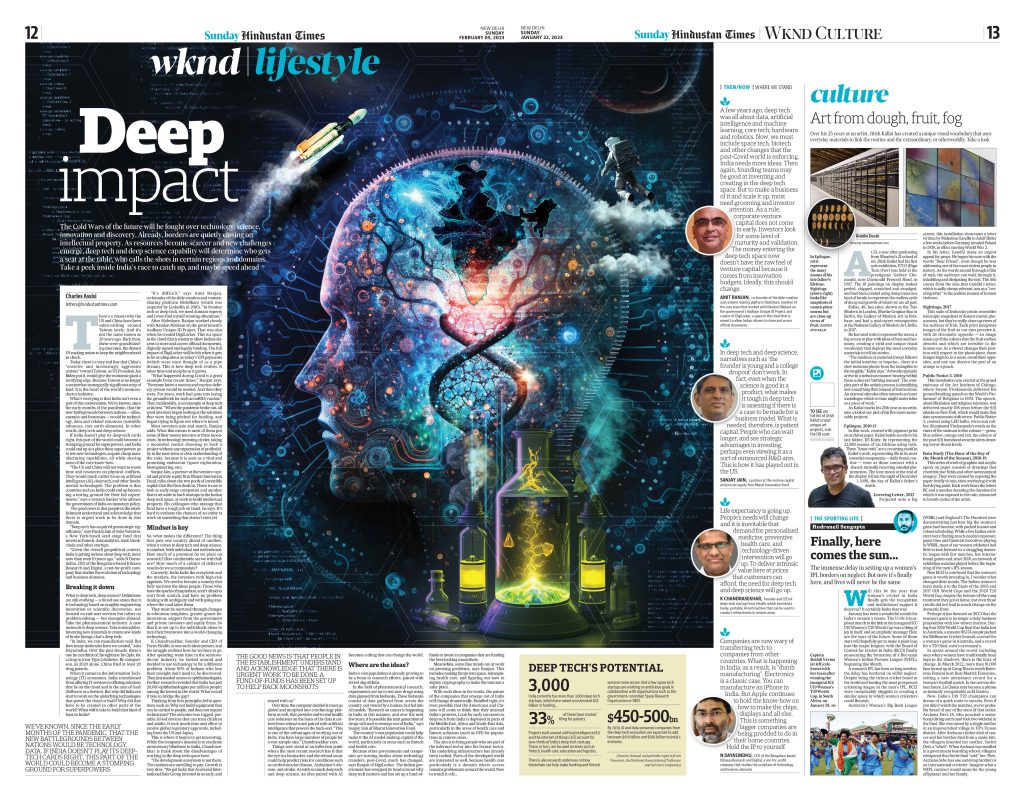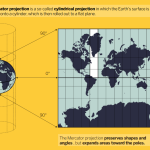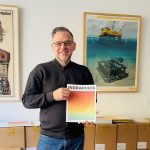Anup Gupta, the Managing Editor of Hindustan Times, talks about his design mantra and the newspaper’s design approach and aesthetics to tksajeev in an exclusive chat for www.newspaperdesign.org.
How do you see the role of design in print changing in the next 5–10 years?
‘DESIGN’ by definition (as I see it) is a ‘Creative solution to a problem’, if this be true, as I believe it is, the role therefore that it plays in every sphere, print or digital, will remain as relevant as it ever was and continue to be so going forward. As the storm passes and water finds its way (subscribing to the concept of ‘Form, Storm, Norm and Perform’ as formulated by Bruce A Tuckerman in 1960’s). I believe all formats used to disseminate information (read news) will find their rightful place. As that happens, I believe PRINT will play a key role leveraging its strength, if not a pivotal one, ably supported and bolstered by other mediums / platforms.
What are some of the biggest challenges and opportunities facing design editors today?
As always, and probably more so in today’s day and age, there are many challenges, and opportunities, design editors are presented with, the most recent being the one posed by Gen AI. The key challenge, however, now for all of us is to be agile and open to rethinking practices that have been followed for decades. In being so (being agile) also lies the opportunity to be able to explore and embrace newer approaches to ‘designing’ appropriate solutions that communicate and tell a story in a manner that makes them native to the platforms they are being narrated on.
How do you balance the need to be visually appealing with the need to be informative and accurate?
The need to disseminate information in an accurate manner, that is visually engaging and appealing, is a delicate balance that is of paramount importance for the audience being served. Without any doubt the ability matures as the design journey for the individual progresses. To my mind unless there is harmony between these (visual com, information and its accuracy), there will not be any music or an enjoyable experience for the audience.
How do you work with reporters and editors to ensure that your design choices enhance the storytelling?
Since the design team must engage and produce solutions for a varied range of topics (none of which we can claim any expertise on), we engage with the edit team for a prelim conversation to be apprised of the topic, then research to build better understanding of it, develop different approaches basis the understanding and the briefing, review with the edit team again for any misses or improvements, narrow down to a preferred approach and then render. As we achieve a satisfactory level of completion while rendering, we review the solution with the edit team yet again, modify and move to complete the render.
What are some of your favourite recent design projects from the Hindustan Times?
Since all projects present a unique challenge and an opportunity, it is difficult to pick a favourite. That said, and if I must pick one, without any doubt, the redesign of Hindustan Times (and its associated products) that we conceived and executed in the last quarter of 2020, would have to be my pick, firstly for the challenge and the scope it presented, and secondly for the results we achieved at the end.
Nameplate
Crest
HT has a lot of creative people in the design department. Then why are you depending on foreign consultants for redesign? What is its advantage?
Irrespective of how many creative minds are on a project, it always helps to get a fresh pair of eyes on the proposed solution just in case there are any misses. In that spirit and if I understand the question correctly, as I see it, engaging a global design consultant on a business-critical project is not a negative or a comment on the skills of the inhouse team. Rather, it is an opportunity to engage with a subject matter specialist to gain a perspective that may present new opportunities, who knows? That said, I must add here, the nature of the engagement with the foreign consultant has changed over the years. While earlier the consultant would be expected to provide the end-to-end solution, now the engagement is more to enable the inhouse team to create the solution then partner with the foreign consultant to evaluate the solution, plug holes if any, and finally see the implementation through to its logical conclusion.
As against earlier redesign efforts where the consultant engaged with the business and the edit teams to understand the ask and built the solution, in the instance of the redesign of HT in 2020, after extensive research and multiple data gathering forays, the thought, the approach (revised branding including the need to create a crest, product structure, typographic and visual language, colour palette) were developed by the inhouse team along the lines of the requirements set by the Editor-in-Chief. The solution built by the inhouse redesign team (and it was a small team) was then sharpened further in a few interactions with the foreign consultant (Dr Garcia in this instance) and the final option was presented to the Chairperson, which¸ after approval, was taken live across all editions simultaneously. Without any doubt, for all of us on the team, it was a great opportunity to engage with a global thought leader and learn from that experience.
(standing left to right) Anup Gupta, Dr Mario Garcia, Monica Gupta, Malay Karmakar, Puneet Verma and Lolita Bhaduri
What are your thoughts on the use of data visualisation in print?
Irrespective of the platform it plays on, data visualization is a fabulous tool in the design kit. If used smartly, combined with meaningful visuals, it can result in an exceptional experience for the audience, in print as well as on the digital platform. At HT we are particularly conscious of the power of this story telling method and have deployed it effectively many times.
Interactive graphics
Click the link
https://www.hindustantimes.com/static/lata-mangeshkar-every-hindi-film-song-one-graphic/
How does Hindustan Times use social media to promote its design work?
I am not quite sure I understand what is implied as ‘design work’. That said the focus is to promote a story, and in that effort we have propagated and designed a concept of social cards that play on the print and the digital platforms in a manner that the branding is the same on both (see sample attached) . However for specific data packages carried in print (see sample attached) the unit is reconfigured as cards (see sample attached) for the app as well as for usage in any other digital platform. Given the time and resource compulsions we have not yet explored adaptations of daily print solutions as interactives for the digital platforms. However we have, for large and detailed feature offerings eg 75th Anniversary of Independence Day, created engaging interactives for the event microsite (see link attached)
Social card
Print graphic
Digital cards
Special microsite
What advice would you give to aspiring design editors?
In my 4 decades in the industry, I have realized that to be a design editor of some worth it is essential to be disciplined, be passionate, be receptive, be agile, and be hungry for knowledge. The speed at which the rules are being rewritten these days unless one is disciplined in their approach, passionate about their craft, be open to ideas being presented from any quarter, nimbly adapting the thought to its usage and being forever hungry to know more, there is every possibility that one would risk being left behind.
How does HT approach designing for different digital platforms, such as websites, mobile apps, and social media?
The only thing that governs the design effort for different platforms is usability, resultantly content and its units are appropriately modified to suit the usage such that the visual is native to the platform (see link attached)
- 75 years special : https://www.hindustantimes.com/static-content/10m/75Independence/index.html
How does HT use data and analytics to inform your design decisions?
As is the case with any product, at HT too we listen very carefully to our readers and use the data and understanding from these sessions, to produce effective solutions. As an effective use case I would present the redesign effort undertaken in 2020. Extensive sessions were held with the cohorts to understand their needs, especially how they engaged with the brand, the product and its various offerings. The data then gathered was sorted to determine the usability patterns and requisite calls were taken to develop the revised branding, the crest, product structure, typographic language, visual language, the colour palette etc. The result is there for all to see.
Do you think AI is going to change the newspaper industry?
I would be lying if I said, ‘not at all’. Of course, AI is going to have a significant impact on our lives, and every industry, including the media and newspapers too. The speed at which technology has spread, the jury is still out on how, and to what extent, will the impact be. It is important therefore for all of us in this industry to understand AI is here to stay, appreciate the power of this new ‘being’ and figure out ways to harness its energy. At HT we have used Gen AI to assist conceptualize complex stories on science for the HT Wknd section.
Do you think one has to use alternative story forms more to attract young readers to print media?
That young readers must be attracted to the print medium is a given, and to do that a very compelling narrative has to be created that fulfills a need for this cohort. If in that effort alternative story forms need to be deployed, one must make an intelligent assessment and use them.


